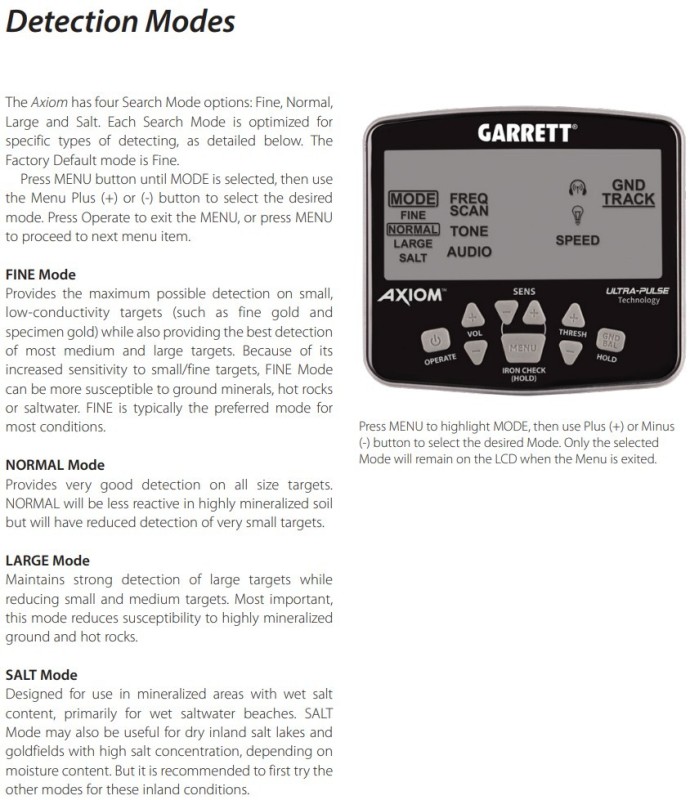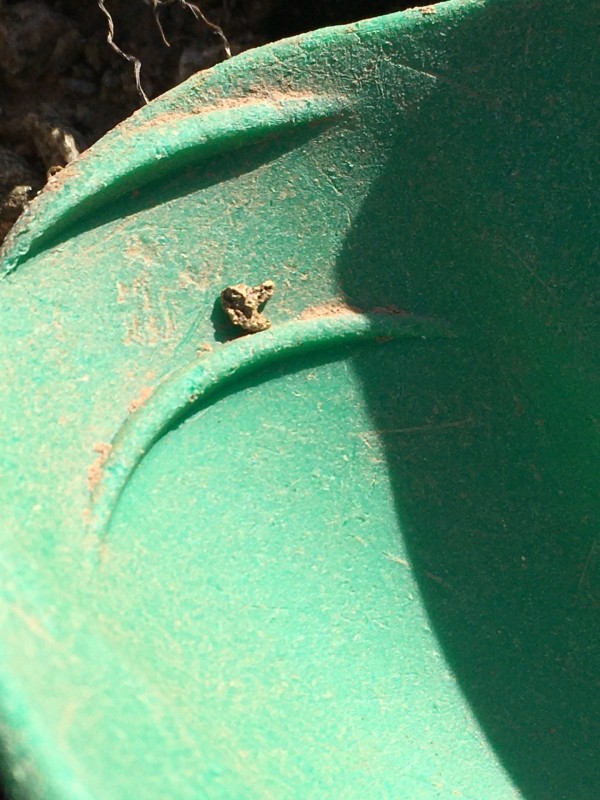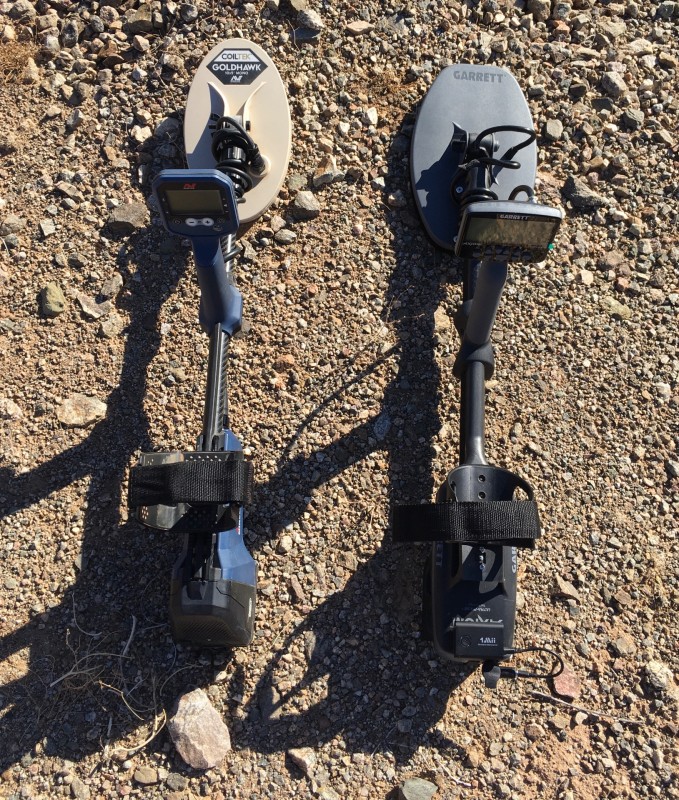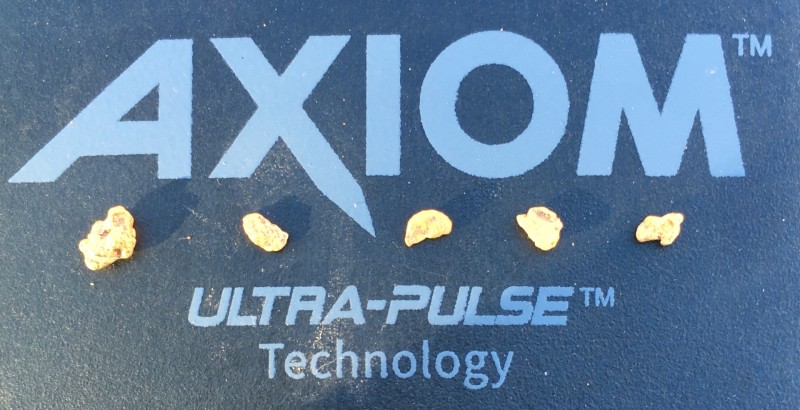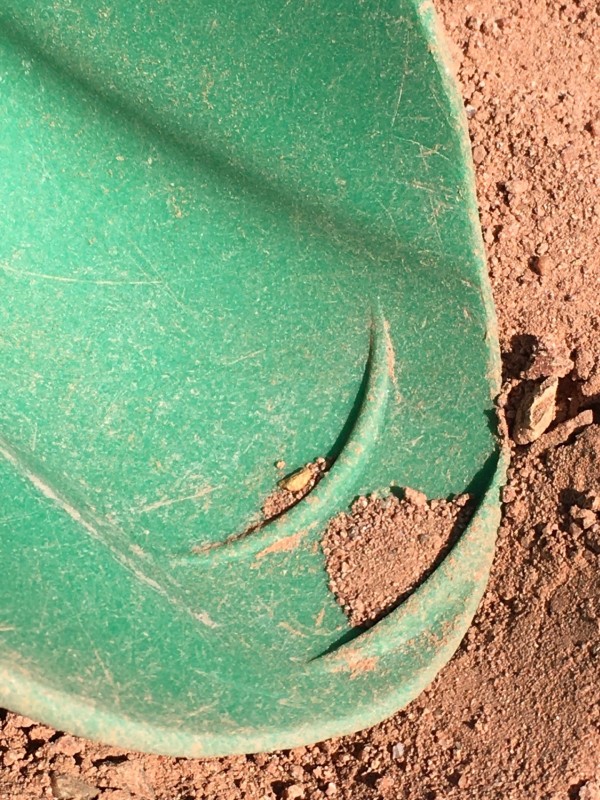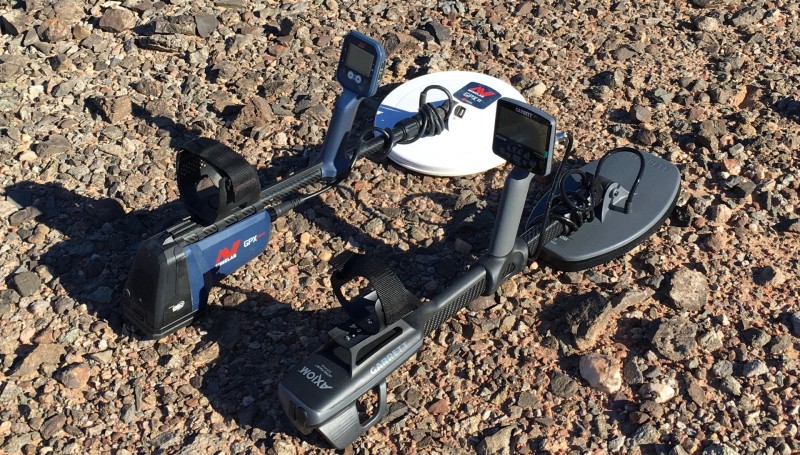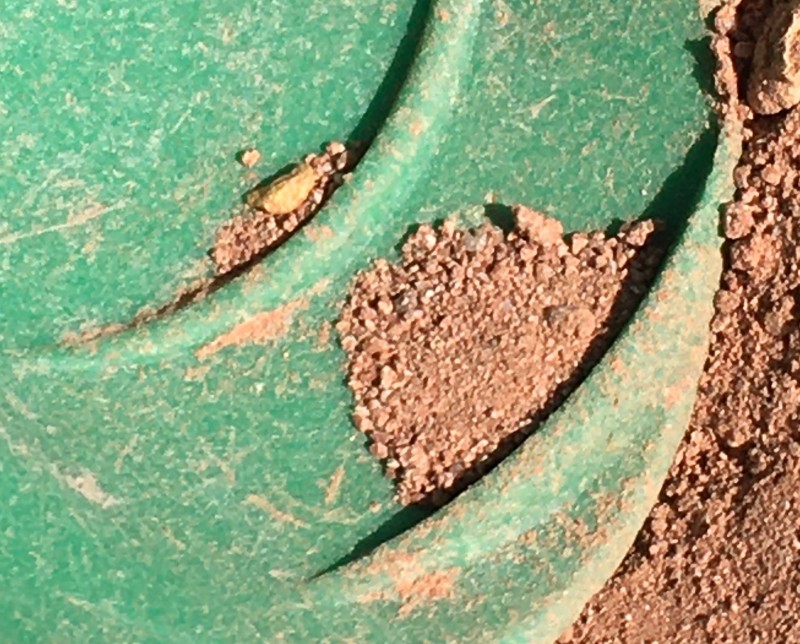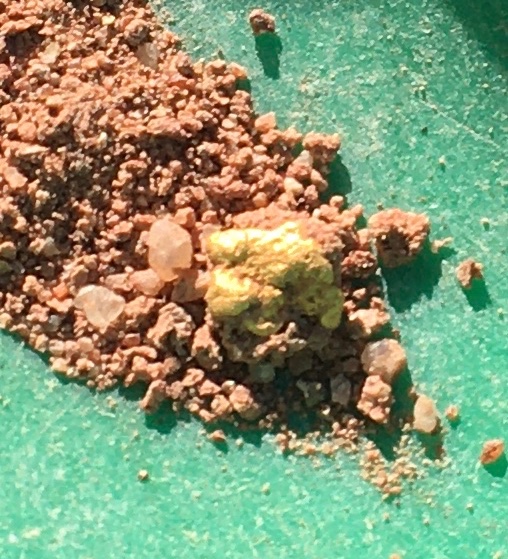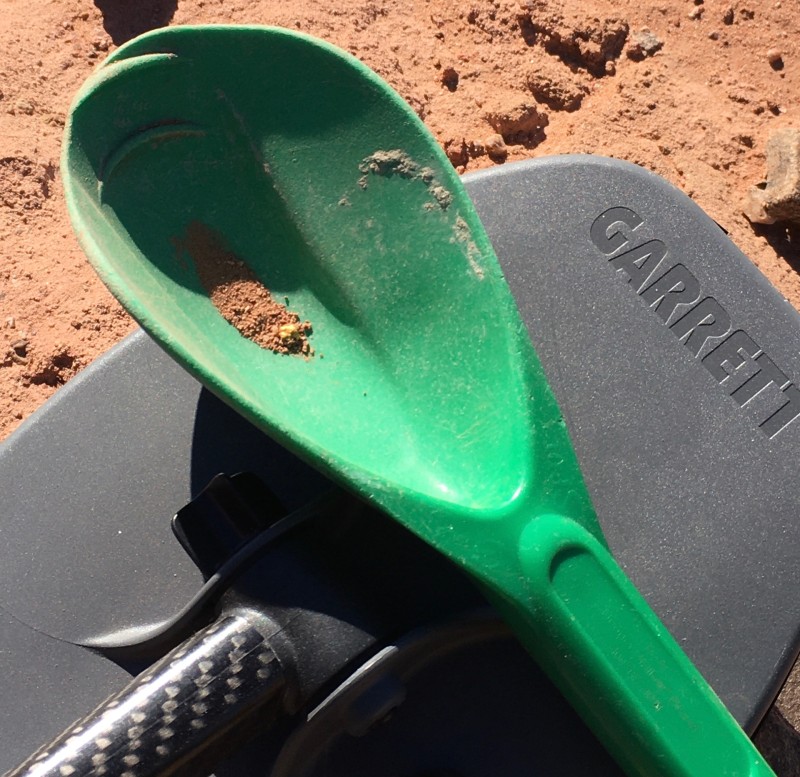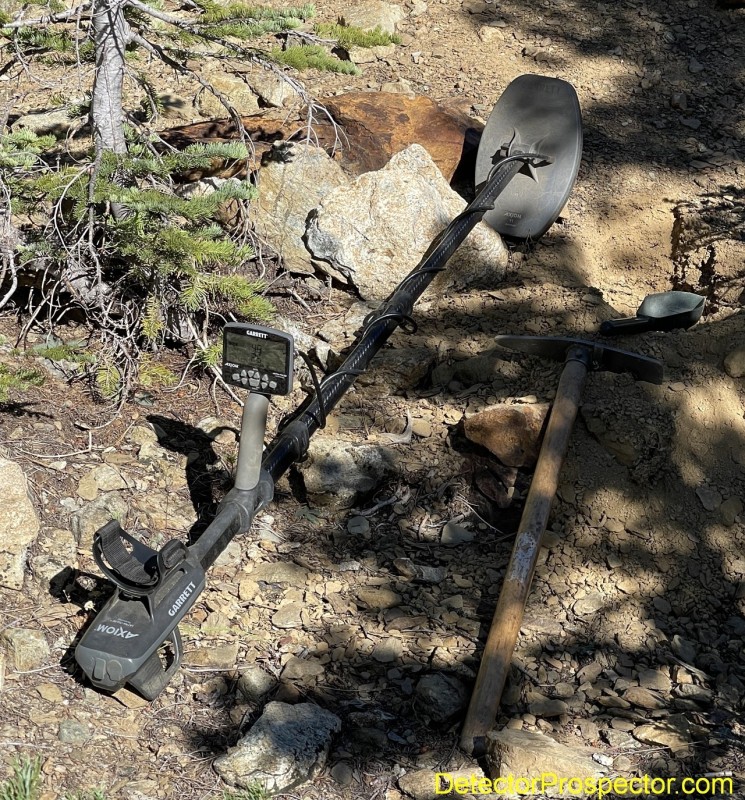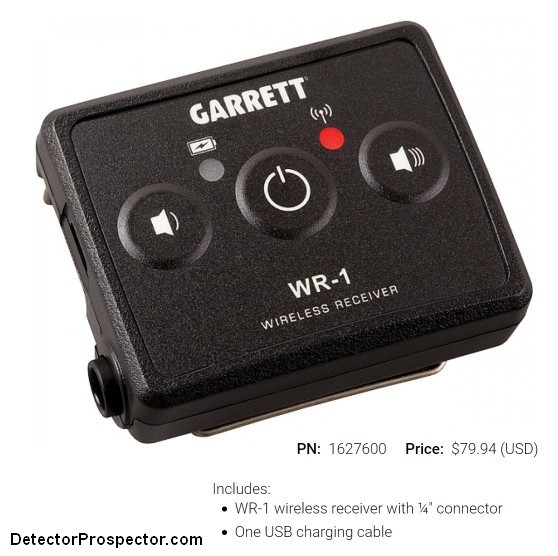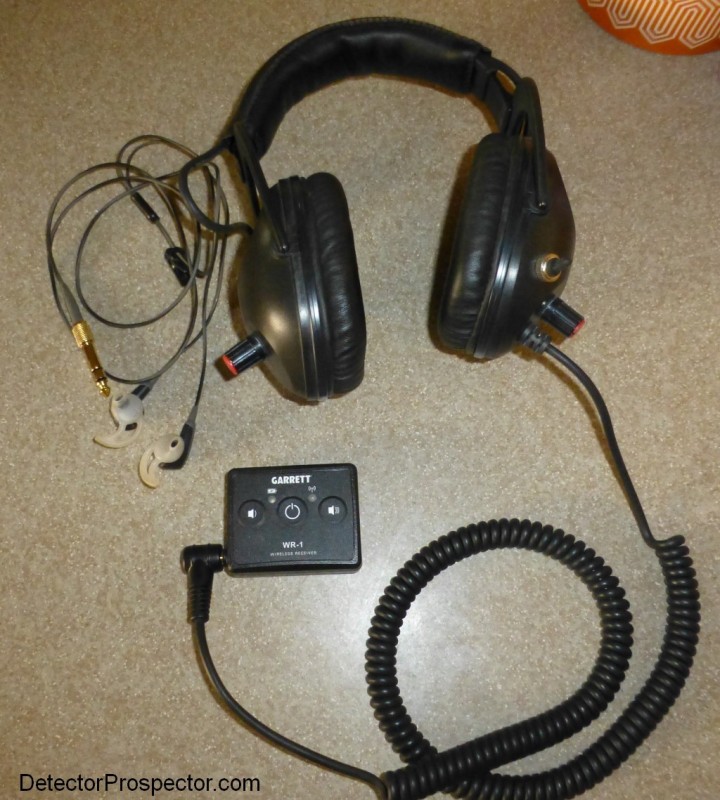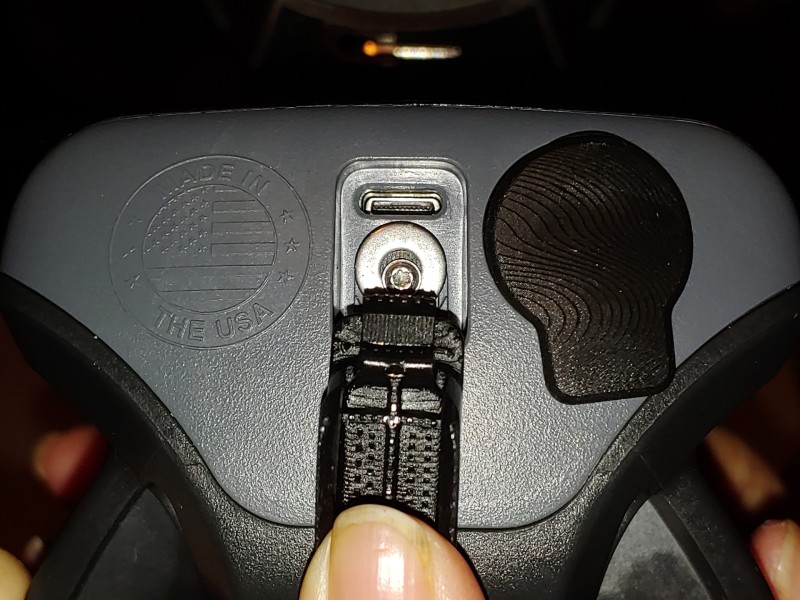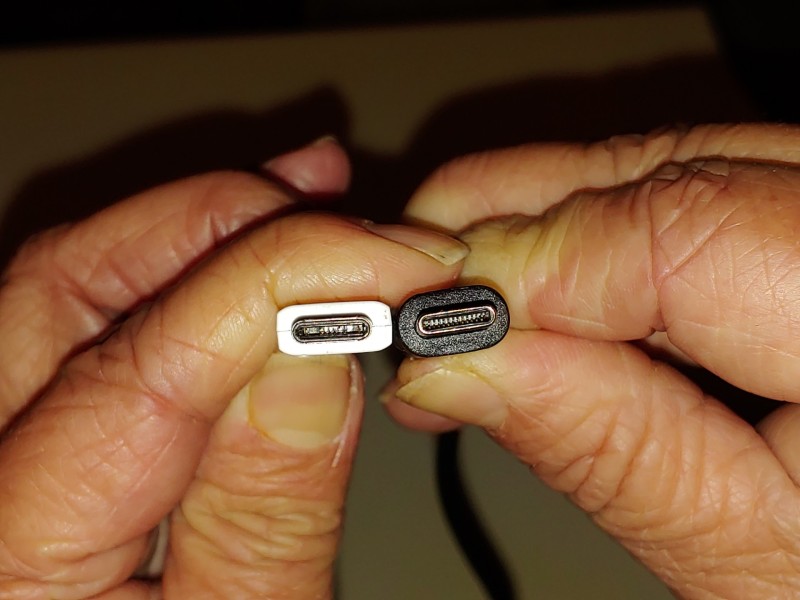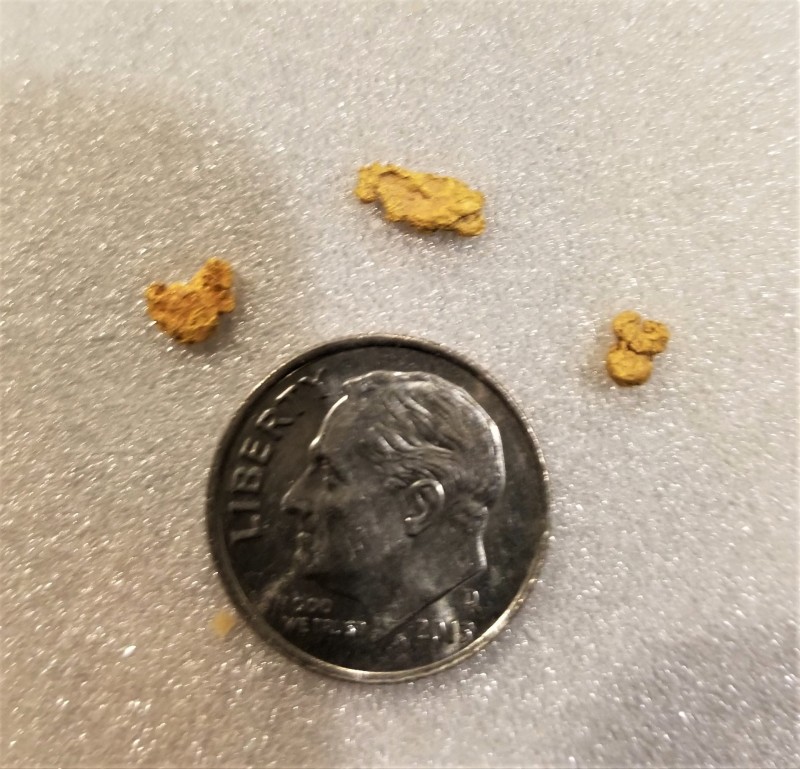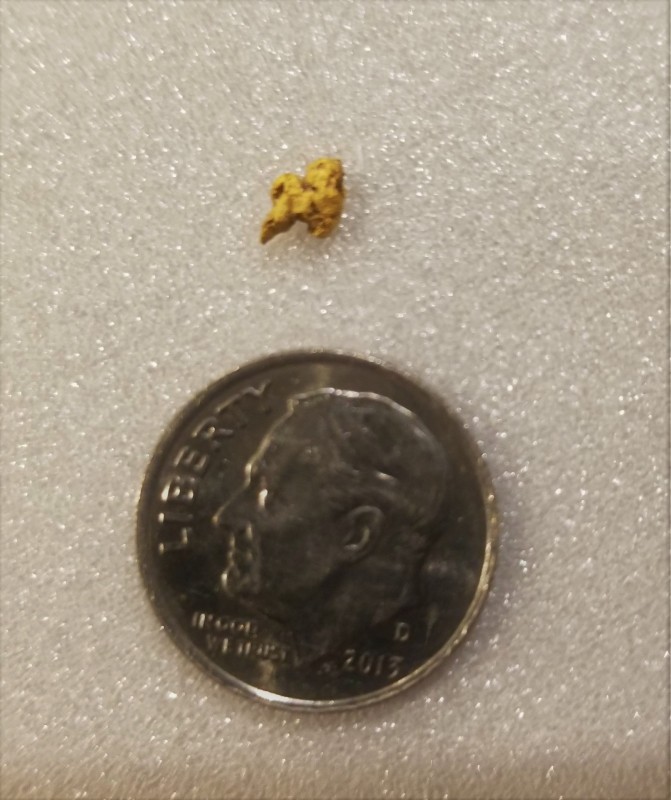Search the Community
Showing results for tags 'garrett axiom'.
-
So far, I've only been able to find one video with the Axiom on CW hunting, and that was the one put out by Aquachigger. Unfortunately, for the most part, he only turned the video on after he had recovered the item. That does me no good in understanding he capabilities or sounds of the detector. Occasionally, he would say that was a deep bullet. How deep? The best that can be said is that he did find several relics in a previously pounded spot. If you have CW hunted with the Axiom, tell us about it.
-
Other than the weight and cost of coils, has anyone compared the ATX to the Axiom for prospecting?
-
Hi ALL Just wondering if anyone can tell me the following: If the main battery were to fail in the Axiom, could the booster pack be used to bypass the dead/defective main battery? In other words, could the Axiom be used exclusively on the battery pack? Pls and thanks!
-
Hi Steve, You mentioned that when you were in Meekatharra you only used the 11 x 7 DD. Any particular reason? Did you try the mono at all? I was in Cue (120 klms south of you) using a 6000 (mono coil) and getting good gold as in the pictures I DM’d you. Now I’m back in Kalgoorlie and today we drove about 90 klms north east to a tenement that has been good to us in the past using 6000’s and mono coils. Axiom and 11 x 7 mono drove me insane. Ground balance was difficult at best and on several occasions simply would not happen. Literally scream it’s head off on the up and down while trying to ground balance and only a factory reset would bring it back. Sensitivity on 2 (nothing higher was usable without ground balance every 3 steps), fine mode, tracking off. Also we tested using the usual 0.11 gram piece been using for years. Sensitivity at 3-4 had the Axiom running just bearable but could not hear the test nugget sitting on the surface. Crank sensitivity up to 5-6 and you could hear the target in amongst the noise but it was unusable due to instability and noise. Literally ground balance every step at this setting. We both had a crack and tried many different settings all the while remembering your comments on the higher gain in production units. This Axion defaults to sensitivity 4 so has the higher gain. Tried different speed, mode, threshold settings. 👎🏻 Tried the DD. Quieter and smoother (as expected) but couldn’t hear the test nugget under 6 sensitivity, like the mono but pretty much unusable at that sensitivity. 6000 hits the test nugget without issue. Don’t know what else to try. The 6000 operated normally (flat out, threshold turned back on) and we also had a 4500 that was a bit noisier than normal however could be tuned quiet enough to use and find gold. Starting to wonder if I have a dud coil or unit. Would have spent two full days now in 11 different locations with same results. Frustration. Videos and comments on good old Spewtube show Warren and the NQX crew and you (and others) getting nice small 0.10 gram and smaller nuggets at Tibooburra and Victoria however I have zero confidence my Axiom will ever do that in WA. Getting nowhere fast here. Been trying to sort it (in case PEBDAS) but run out of things to try.
-
Hi Steven, Thank you for being very informative in providing such a great video. I do have a question: with iron check what if there is a gold nugget as well as a iron nail? IDK what will be that sound like. Also I am based in Australia and will be go prospecting in WA again next year. I am sort of wondering which should I have, a GPX 6000 (dad already has one) or Axiom? ( I have seen your reviews on different detectors however I still wonder if you have some personal opinion? Many Thanks, Ethan
-
Wow, the Axioms no underperforming slouch, it`s a performer right up there and not just at the heels of the 6K, in time I suspect those settings, the manual GB option, speed options, no coil chip etc will make it this old codgers King, now to work it hard and get over that Placebo effect. I`m excited............😁
-
The video below goes over it pretty well. However, I think the mode names confuse things a bit, so want to go into more detail here. Before I start however, if you have not read it already, please read my post about the Axiom sensitivity control. Understanding that control and not having it set too high is critical to everything else. The Axiom detection modes are: Fine Mode Normal Mode Large Mode Salt Mode Now, to look at that it implies you chose the mode according to the desired target size. Fine for tiny, Normal for medium targets, and Large for, well, large targets! And that is kinda sorta true…. but not really. The modes are basically pulse delay presets. A type of PI preprocessing sensitivity mode, unlike the sensitivity control itself, which is processing the signal after the fact. Due to digital processing it’s more complicated than a simple pulse delay control, but that’s the best analogy to go with for you techies out there. Fine Mode has the shortest pulse delay, and so is the most sensitive across the board to all targets. This means the smallest targets in particular, but it also means ground and hot rocks. Normal Mode is less sensitive to the smallest targets, but it is also less responsive to hot ground and hot rocks. Large is less sensitive still, with good sensitivity on larger targets, but less so on the smaller targets. Some small stuff won’t be detected at all. But the worst ground will become invisible, and some of the more troublesome hot rocks. Salt is specifically set to ignore the signal produced by conductive salt environments. Salt water is conductive, very low conductivity to be sure, but the same as very small gold nuggets, single post ear rings, and thin gold chains. You want this setting for wet salt beaches, but it will also tune out some tiny gold or other desired items. This is physics at work and can’t be avoided (read this link). The mode names imply that the focus is on target size, but that is not what you normally will use to determine what mode to employ. It’s more about the ground conditions. Think about this instead: Fine Mode = Normal Ground Conditions. I would have named it Normal Ground Mode, as in the normal mode you use for normal ground. The default mode for most uses, with best overall sensitivity to all targets, large and small. Normal Mode = Difficult Ground Conditions. I would have named it Difficult. Let’s you are having problems ground balancing or with hot rocks in Fine Mode, and have done you best to use sensitivity, speed, and coils as a solution. Lower the sensitivity a bit. Use the ground balance window. If using a mono, try a DD. If none of this is working, go to the Normal Mode, or as I think of it, the Difficult Ground Setting. At this point you may be able to go back to a mono coil, or increase your sensitivity, etc. Large Mode = Severe Ground Conditions. Yup, I would have named it Severe Ground Mode. What if Normal (Difficult) still is not working? Ground signals from hot spots, maybe in a fire burn area, or clay deposits. Perhaps really bad hot rocks. Large Mode is for the worst ground and hot rock conditions. Yes, you will lose some target sensitivity, but if everything sounds like a targets, that’s no good. So get rid of the false signals to make the real targets stand out better. This mode can be used to help alleviate some of the tiniest trash targets also, by desensitizing the Axiom to those targets. The main use however is for dealing with really bad ground. Again, be sure you have explored all the options in Normal Mode, like lowered sensitivity or DD coils, before going to Large Mode. Salt Mode = …. Salt Mode! Yes, this is for use in salt water or on wet salt sand or soil. Wet desert salt conditions after a rain storm. It’s not all about the beach, but any salt conditions. As noted above (read that link!) tuning out salt also tuned out a class of the smallest conductive targets. Tiny aluminum, tiny gold, tiny lead… little stuff. This mode in all actuality is an alternative to the Large (Severe) Mode and should never be ignored as a setting even if salt is not involved. It may actually be the magic setting to make one particularly nasty hot rock just disappear. So two pieces of advice. Think less about target size and more about the ground you are dealing with in choosing modes. And in general, use the most sensitive mode possible, no matter where you are. To aid in that, let’s treat the modes for what they are, a type of sensitivity control. I am putting these numbers in reverse of order of choice since higher numbers normally mean more sensitivity. If this was a knob, turn it up or down. 4 = Fine Mode (normal ground). Your most sensitive mode, your first choice, and the default for that reason. 3 = Normal Mode (difficult ground). A little less sensitive than the above to difficult ground and hot rocks, and tiny targets. 2 = Large Mode (severe ground). For the worst ground, burn areas, clay domes and seams, and severe hot rocks. Can help with tiny trash, so a relic hunter looking for larger bullets when there is a lot of tiny lead or other stuff may prefer this mode. 1 = Salt Mode (salt ground). Usually for salt conditions, but also as an alternative to Large Mode on any really bad ground. Can eliminate tiny lead shot, small aluminum foil, and other troublesome trash targets. Turn it up to 4 for most situations. Lower as needed. It’s that simple actually. Let the machine tell you when you need to go to a lower setting. For beach detecting, do not use Salt unless you really need it. Up in the dry beach, any one of the other settings may work, and should be used if possible. Always use the highest setting possible, dropping down a notch at a time until you find the mode that helps deal with whatever issue you are having, whether it’s bad ground, hot rocks, salt, or tiny trash. I hope that helps rather than confuses. So Steve, you ask, why did they not name them the way you like? Well, the LCD was baked before I even saw it. One if the frustrations with this testing stuff is decisions being made before I even have a chance to comment. If I had been on board when the LCD was penciled out, the modes would be oriented to ground, and speed would have been reactivity. But I was not, so there you go.
-
This is a bit of a big deal, maybe not for the rest of the World but it is for NZ customers. The Axiom is now priced at a much more reasonable price, now it's priced just under a GPX 6000. A dealer I didn't even know existed now carries it for 8,599.00 NZD for the wireless package and have it in stock. So if any NZ'ers are out there looking for an Axiom it's worth contacting Detectors Downunder, I've honestly never heard of them which is odd, they're a 100% NZ owned business and sell the full Garrett range. The GPX 6000 is currently $8,898.99. They're called Detectors Downunder and they service both Australia and New Zealand. https://detectorsdownunder.co.nz/products/axiom-wireless-package Also, they take care of the warranty should it be required, it's just sent back to them so that's great as that was always a concern with Garrett in NZ and even Aussies shared similar concern, what to do for warranty, so this seems resolved. It's now making the other Garrett dealer in NZ look very bad as they're still trying to sell it for $10,770.81, more than a GPZ 7000. In Australia they also have the Axiom on their Aussie site for $7385 AUD for the wireless package and have it in stock too. https://www.detectorsdownunder.com/garrett-axiom-wireless-package 🙂
-
Hey All, It was brought to my attention from a friend, that the new Garrett Axiom is just old Minelab technology. I really didn't know how to answer this question, when it was asked. Someone (name not listed) posted this on a social media, so myself and other customers are curious on the validity of it? I'm not sure what Ultra Pulse Technology really is, beyond Garrett's PI version or technology. Curious mind would like to know ....
-
As well as any PI discrimination - anyone expecting VLF type discrimination will be disappointed. PI discrimination no matter how you do it is pretty poor with lots of good judgement necessary by the user. When in doubt, dig it out. But light years better than the 6000 in that regard. I get it. Minelab is saying that PI disc sucks, so forcing the issue by not offering the option at all. There is no doubt we should dig all targets. But I think there is also no doubt many of us still cherry pick when faced with too many targets, most being nails. We simply dig what sounds good. If that is indeed our reality, and I think it is for most of us, then having all the disc ability possible for use is a good thing, and so I welcome the Garrett Iron Check feature as just that. Another way of double checking targets in trashy areas. But do not fall into a bad habit of leaning on it a lot all the time. The more naturally occurring iron ground mineral you have, the more risk the system gets fooled, to the point where in heavy magnetite I'd say it's more likely to be fooled than not. The disc is better for coin and relic hunters in one way. If the system tricks me in bad ground and I miss a nice gold nugget, that is a pretty big deal. If I am relic hunting, and it makes me miss a bullet or two, but gets rid of most ferrous, well, that seems more acceptable deal to me at least. Though the relics hunters may beg to differ! If you want to be conservative and use the Iron Check in the safest way, consider using it as a reverse disc system. In other words, many of us get pretty good at picking and choosing targets with a pulse induction detector. Most gold tends to give sweeter high/low tones. Most low/high tones are larger junk (or larger gold nuggets). So people like myself will sometimes focus more on high/low tones and ignore the low/high as nails. But the low/high can be the largest nuggets! So think about this. You are in a nail pit and decide at some point to skip the low/high as being trash targets. OK, so far, that's normal. But now, go ahead and use the Iron Check to verify this. If it gives a consistent iron grunt on a low/high target, it is almost sure to actually be ferrous. If it does not give the grunt or seems unsure, maybe you better dig that one after all. The Iron Check has limitations, first being it does not work at all on the deepest targets. The tones do, but Iron Check only works at 2/3 or half of the full depth. The deepest nails are not going to Iron Grunt. However, a lot of nails are shallower, so this offers a middle ground. Instead of ignoring low/high signals, only ignore low/high signals that also have a solid Iron Grunt. This double check verification is a much less risky strategy. Yes, it does mean you will dig the deeper nails. Sorry, but you can also with good accuracy eliminate all those much more common nails that are just below the surface. Consider also that a deep low/high is not going to be a small nugget; if it's gold, it might just be the biggest nugget you ever dig in your life. You are looking for a trophy nugget in a nail pit, this might help you better your odds. What I am saying here is to use the iron check to make you dig targets you might have otherwise passed on - reverse discrimination. Now what about the small nuggets, the high/low tones, that by nature will be shallower targets? And small ferrous trash, that sounds the same? The ferrous check is also great for small ferrous in milder soils. But again, if in heavy magnetite, be less trustful. Look for reasons to dig, not reasons to skip targets. If the iron grunt is indecisive at all, dig it! When in doubt, dig it out!! A good super magnet on your pick head is a more accurate and very efficient way of dealing with the shallower smaller stuff. A reminder - the Iron Check only works with the Garrett DD coils. Another reason to consider the 11" DD over the 11" mono for hunting the trashy sites.
-
I've been doing a little comparison testing lately between the new Garrett Axiom and the Minelab GPX 6000. My focus was on sensitivity to small gold, as most areas I hunt still have plenty of tiny nuggets left; if there are any large, deep pieces left, they’ll still be there for the next generation GPZ to unearth. This comparison is not scientific by any means, and was done just for my curiosity, but I've decided to share my methods and observations for anyone here that may be curious as well. So first up was comparing the Ax fitted with its 11”x7” mono coil to the GPX 6k with its stock 11” mono coil. Settings for the Ax were Fine Mode, Tone at 77 (which is the same pitch as the fixed threshold tone that the GPX 6k runs at), Audio 01, MS-3 wireless headphones wirelessly connected, Speed set to Slow, Volume 25, Threshold 15, Sensitivity 8 and Ground Track Off. And the 6k sensitivity set at Manual 10 (I typically always run on Auto+, but since there were high voltage power lines near this location, I didn't want the Auto sensitivity reducing itself to compensate), Volume at 1 bar and the Avantree Torus neck speakers wirelessly connected via the 6k's inbuilt bluetooth, and Normal selected for the ground type. For this test, I selected a small area that had been raked and detected in the past, most likely during the late 80's to early 90's era, with the VLF detectors of that time. My comparison method was simple: I slowly and carefully gridded the raked area with the 6k until it hit a target, then switched off, fired up the Ax and gridded the same area in the same direction that I just did with the 6k, until I reached the same target. After digging the target, the gridding would continue, this time with the Ax, until another target was encountered, then switched off, fired up the 6k and re gridded that same area, etc. The idea was to see if either machine would see (or not see) targets that the other could (or could not) see. After gridding the entire raked area in this manner, all targets found were detected by each machine, and there were no targets found by either that the other could not detect. All targets save one were small gold nuggets, the only exception being a weak magnetite hot rock. The only thing I wasn’t liking about the Axiom at this point was the sound quality of the signal through the MS-3 headphones; it was no where near as clean and crisp as the target signal from the 6k and Avantree Torus speakers. It was a little cleaner using the Ax's inbuilt speaker, but it was still not to my liking, so I sent for a small Bluetooth transmitter from Amazon that I could plug into the Ax's headphone port and receive the signal with the Avantree Torus Speaker (you’ll see it attached to the Ax in the photo below), and that did the trick. A friend generously sent me his Axiom 11”x7” DD coil to test on small gold, and this time I pitted it against the 6k outfitted with Coiltek's hot little 5”x10” Goldhawk coil: Same settings on each machine, except nowhere near power lines, so was able to run the 6k on Auto+ sensitivity. This time, I selected as the testing area a small dry wash gully that had some old dry-blow heaps (dry-washer piles to us yanks) up on the banks. Small nuggets can always be found by following the dry-washers, especially in their fine tailing piles. Though many targets were found, only one turned out to be the color we all look for; the rest were small bits of wire brush bristles, aluminum foil and some small pieces of bullet jacket shrapnel. As far as the comparison goes, it was the same story - each detector heard all targets, and none were missed by either. As I noted at the beginning of the post, the comparison between the two machines wasn’t scientific, in fact I didn't bother measuring target depths or weights of the nuggets found; it was mainly to see if the Ax can keep pace with the 6k on sensitivity to small gold, and it appears to me that it certainly can.
- 13 replies
-
- minelab gpx
- gold found
-
(and 1 more)
Tagged with:
-
For everyone with a new Axiom, or anyone considering one, you need to see these threads. I will add more threads if anything else comes along that falls into the "must see" category. Axiom Instructional Video Training Series Axiom Sensitivity - A Must Read For All New Owners! Axiom Focused Core DD Coils - A Must Read For All New Owners! Three Tips For The New Axiom Owner Axiom Ground Noise or EMI? Axiom Detection Modes Explained Axiom Wireless Headphone Report With Options Notes On The Axiom Iron Check Feature Axiom Ground Balance Window- Not Just For Hot Rocks? New - Axiom Experimental Settings Garrett Axiom Owner's Manual Garrett Axiom Specifications Official Garrett Axiom Product Page Forum Threads Tagged "garrett axiom" Garrett Z-Lynk Wireless Audio System Details Garrett Z-Lynk Enabled Pro-Pointer AT Details Garrett Axiom At Nome, Alaska Garrett Axiom vs Minelab GPX 6000 on Small Gold Coin & Relic Detecting With the Garrett Axiom
-
Wow, I wish I had done this sooner! I got a Garrett WR-1 wireless module for my Axiom some time back, but never seemed to get around to giving it a spin. I use the external speaker most of the time, and the rare times I needed headphones I've preferred to plug in my Sun Ray Pro Gold wired phones. Not only do the Sun Ray have better audio quality than the Garrett MS-3 wireless phones included with the Axiom, but I never need to worry if they are charged. They are always in my kit ready to go. Most importantly, I like dual volume controls due to hearing loss in my right ear. I can use phones without dual controls, but prefer them when I have them. Let's call my 150 ohm Sun Ray Pro Gold as a 10 rating for audio quality. I'd rate the 8 ohm Garrett wireless MS-3 as included with the Axiom as an 8, just very good, not bad, not great. They actually are a good match for the external speaker on the Axiom, as it is hard to really say the headphones sound much different than the speaker, other than being closer to the ear and having sound exclusion properties for background noise. So again, I prefer the external speaker for most use because it has a LOT of volume. For anything else I preferred my Sun Ray Pro Gold. The only problem there is I do want to be wireless with my headphones. Being wired to the detector is a real pain, especially when I put it on the ground. Enter the Garrett WR-1 wireless module, a quite compact receiver for the proprietary Garrett Z-Lynk audio built into the Axiom. Z-Lynk is a 17ms high speed wireless option, much faster than Bluetooth, and being proprietary to Garrett, pairs instantly. Garrett even has a wireless version of their pinpointer that works seamlessly with the system - very nice! The only issue I have seen in that like many 2.4 Ghz systems the signal does not penetrate solid objects well. If you experience audio drop out with the MS-3, pay attention to the detector positioning when it is happening. Reversing the headphone on your head may help, as will setting the detector away or more ahead of you when it is on the ground. I just gave the WR-1 a test run, and I love it! I was worried that maybe the audio quality issue with the MS-3 was related to the wireless signal itself not transmitting the full audio spectrum. Luckily that is not the case. My Sun Ray Pro Gold sound every bit as good plugged into the WR-1 as they do plugged into the detector itself. This is really good news. It means you can go wireless on the Axiom with any headphone you want. I have a couple sets of wired Bose earbuds I really like for hot weather. They work great with a 1/8" to 1/4" adapter - the WR-1 is 1/4" unlike many Bluetooth wireless modules, since it was made especially for metal detector headphone options. Best of all, the volume can be controlled by the Axiom itself since the ear buds have no volume control. Just like the Sun Ray, they sound great with the WR-1, better than the MS-3. If anyone does have issues with headphone/detector positioning and audio drops with the MS-3, this eliminates that completely since you can place the receiver box anywhere. I just stick it in my pocket, but it can go anywhere you want it that the detector cord will reach. The icing on the cake is Garrett makes a WT-1 Z-Lynk transmitter than can turn any detector into a Z-Lynk compatible detector when used with the WR-1. I am ditching my slower Bluetooth transmitter box and getting a WT-1 for use with my other detectors. It's a great system, see the details here for all the various options. And yes, the Garret wireless pinpointer will pair simultaneously to the WT-1 so you get wireless audio from both the detector and the pinpointer through your headphones of choice. I'm saving the best for last. The WR-1 with USB charging cable is only $67.95 and for anyone wanting to convert other detector to Z-Lynk, the WT-1 transmitter with 1/4" adapter and USB charging cable is also only $67.95. Both can be bought together as a package with a nice carry case for $140.95 Anyway, I am totally sold on the WR-1 with my own choice of headphones as being the only way to go, and for any detector that needs it, I will use the WT-1 also. My old White's DFX just went wireless!
-
Open invitation to Garrett. Send me an Axiom and I will soon tell you how well it performs 'down under'. If it performs well, you will tell me to keep it, if not I will send it back. I am not married to any make, and have a reasonable idea of how to use a detector. If it is good, you have nothing to lose, and neither do I.
-
Since the Axiom uses a 4-pin coil connector and the GPX 5000 coils used a 5-pin connector (pin 5 was not used), is there a possibility that GPX 5000 coils can be used by changing to a 4-pin connector? Some of us still have GPX coils in our closets.😁 Bill
-
I am happy to report for Garrett Axiom users and potential buyers you will have a range of aftermarket coils available for it from Detech Detech Ltd have said they are very interested in making coils for the Axiom and are currently preparing to make a range of coils for it. The excellent news is also they are planning on making DD coils, Anti Interference Coils, Spiral coils, and very likely Concentric coils. They will offer open and closed designs. Their aim with their range of coils is to make them very deep, sensitive and at the same time keeping them very light in weight. They are going to follow this thread, so if anyone has any suggestions for the size or type coil they want or think should be produced by all means report here so they can see which would be the most popular types of coils for it. I personally would like something like a 6" or 8" Mono, an 11" Anti Interference coil, a 11x6" Mono (spiral if possible) and a 11x6" DD, a 15" spiral mono, a 15" Concentric, I could go on forever as once there are options there are so many good coils you could have. This is outstanding news for Axiom owners, and is really going to push the Axiom to the next level. For those of us that have used Detech coils before you'll know how good their coils can be. A little background on Detech Ltd the company. Detech design and manufacturing advanced hobby metal detectors, treasure detectors, and deep seeking search coils. In 2001 the company designs the first PI detector in the world with microprocessor control, touchpads, and graphical image of the signal. The SSP series find wide markets and huge sales, and the funds received to allow the opening of a new branch of the company – the production of accessory coils for the leading brands of metal detectors. Detech Ltd is the first company in the world, applying search coil with built-in magnetic sensors in the middle sector. This allows perfect discrimination of the ferrous objects by the PI detectors. Trying to escape the stereotype of the round coils in 2006 the company releases a new, revolutionary type of coil on the market – S.E.F. (Symmetrical Electromagnetic Field) coils, known also as Butterfly coils. These search coils combine the advantages of both DD and Concentric coils: All Detech coils are made using high-quality materials. The housings are made of UV protected material. Their inner side is covered with chopped-strand material for better shock resistance. We use resins, which are “transparent” for the electromagnetic waves, and perfect shielding. The coils are water-resistant and operate in a wide temperature range. The search coils come standard equipped with an excellently fitting cover and have two years full warranty.
-
Quick question for you guys, do you think an Infinium or atx coil would work on an axiom?I remember reading about Steve putting an Infinium coil on an atx and think he said coils on a pi can often be interchanged without a performance problem but is the connection the same?
-
I finally got my Axiom Demo unit and neither the Charging cord nor the External Battery will plug in. This is due to the fact that the washer used to hold the Rubber Cap is either too big or set too high. (see attached photo). I was able to charge it with my (white) Phone Cord as it's thinner than the rounded (black) Garrett Cord. (see attached photo) I'm going to see if I have a small enough bit to take it out and either readjust it or replace it with a smaller washer. I'd really hate to have to ship it all the way back for something like this. I just wanted to make you all aware of the problem. Walt
-
I currently own a CTX 3030 which I primarily use for coins. I also have an ATX which I use primarily for relics (dig everything) and some trips to the beach. I love the 3030 for what I do with it. I like the ATX except it makes me really fatigued quickly even with a harness. So those of you that have experience with the Axiom and the ATX, could you please give some discussion on the similarities and differences between the two other than the obvious weight differential? Thanks.
-
Hello everyone! Just curious on how you guys are protecting the screen? I was thinking maybe just like a phone screen protector just cut to size. Heavy pans!!
-
I know these nuggets are not huge or even close to it, but I enjoy seeing some of my customers success and their recoveries. These 2 pics just came in from a customer in AZ who took the Axiom out for it's 1st voyage. He used the 11" MONO coil and recovered them 3 to 4" deep. Hopefully more customers will be sharing their success. I'm certain the upstate guys like me are pretty much frozen in for the season so south we need to go.
-
Hey Guys, Due to my limited time, I haven't had much time on the new Garrett Axiom metal detector. However, my first impression on the unit were pretty good. First, the new Garrett sells for MAP of $3995 or 15% discount for USA Active/Retired Vets. I believe Garrett marketed this unit to fit perfectly into the budget of most gold prospectors and treasure hunters. They also give you the option of two packages, one with wireless headphones and a 11" Mono and 13" DD, or wired headphones and a 11 DD and 13" Mono. Many of my customers have been split on the packages, the ones that want more depth out of the box seem to take the larger Mono packages, while the ones that are looking for max sensitivity to small targets and nuggets go with the 11" Mono. Secondly, overall the unit is very light, lighter than any other gold hunting Pulse Induction metal detector including Minelab's GPX 6000. I also believe Garrett built a bit better design, haven't seen issues with a shaft turning or wobbling as of yet, seems like a stronger design from other similar manufactures. Finally, on the Goldfields, the unit was very stable overall. I used the 11" Mono the entire time the first trip out as I wanted to just get used to the performance of the unit before dabbling too much with the DD and Iron ID. That being said, Garrett does offer the Iron ID on this unit, where most other PI's have done away with any type of iron discrimination (GPX 5000 and prior). Many believe there is still a need or use for Iron ID in trashy locations, which I do tend to agree. The unit was simple to understand without even reading the Quick Start Manual. I charged the Axiom the night prior, let it charge overnight and removed in the morning prior to the hunt. I powered on the Axiom, adjusted the sensitivity, placed in Normal mode, Tone around 55, adjusted my threshold, used in Medium Tracking then did the EMI tune and started hunting. The unit ran really smooth and stable, the only time it was a bit unstable, which happens with most detectors is when a airplane flew over. This would last a minute or two, then calm down. Believe it or not, my first target in a very trashy area was a nice nugget (pictures will come). I couldn't believe it, had to yell over to a friend and say, "Dude do you believe this?" That being said, I spent the next hour or so digging through a bunch of trash and didn't find another piece until later. I only had a few small hotrocks respond, which could easily be ID's when seen. I ended the trip with 4 nuggets, two pretty nice ones and two smaller ones. I also had a nice pouch full of iron rubbish, as I was not using the DD or Iron ID on the Axiom at the time. This will be something else I need to experiment with, as I heard the Axiom does very well with the Iron ID mode. I was hoping for a bit more sensitivity to small targets, as I was running the "sensitivity" almost all the way, but realized later I wasn't in "Fine" mode, which I believe will increase the overall sensitivity to small gold even more than the "Normal' mode. Quick Conclusion - Garrett did a great job on this unit, it's priced right, performs well, very lightweight and will have other searchcoil options available. The unit is super easy to use, almost a turn on and Go detector. I know there are a ton of people going to ask, is it better than the GPX 6000, I'm not going to say that, but I think with the price, performance and a USA made detector, Garrett hit a "Home Run" here. P.S. I don't claim to be an expert on this detector, I have had very limited time on it, but do have over 30 years detecting experience now, so I felt I could give a fair, quick field test on this new Garrett Axiom. May all your targets be Golden! Rob

.thumb.jpeg.b5bdca008824846c84cee1662dd31f74.jpeg)
.thumb.jpg.77e4cb5bf39d44bdd2050d2edb7dfdb1.jpg)

